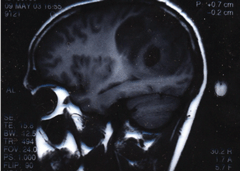Q: I tried ordering an MRI recently, and was told that only an MD can place that order. What gives?
A: “All state practice laws allow ODs to order lab and imaging studies for conditions germane to the eye and related structures,” says James Fanelli, OD, of Cape Fear Eye Institute in Wilmington, NC.
Optometrists simply need to know the ins and outs of ordering, allowing them to request testing with confidence to eliminate hassle.
Lab Studies
Here, the OD has three options:
In-office. This is feasible for multidisciplinary practices, but not worth the hassle in the optometric office due to the onerous rules and regulations, Dr. Fanelli says.
Hospital labs. This is a great option if you have hospital privileges. If not, it can be problematic in some hospitals, but not in others.
Commercial labs. The best option for ODs. “These companies are in the business of performing lab testing; they have account managers on site,” says Dr. Fanelli. All you need is a license to practice and a request for specific labs. “Contact the office, tell them you’re a new practice or a practice that wants to use their services for lab work, and to send you the necessary forms; then tell them to set up an account for you.”
 |
| Optometrists have the legal right to order brain scans like this one. |
Imaging Studies
For imaging studies, the OD again has three options:
General or internal medicine practice. “If the patient in need of imaging is already plugged into a large primary care facility, that facility will probably have on-site CT imaging and some will have mobile MRI,” Dr. Fanelli says.
Order the tests by communicating with the patient’s primary care provider, who can order the necessary imaging in-house. “The plus here is that the PCP usually uses his or her own imaging facilities and that can foster OD/MD relationships. The downside—if the MD doesn’t know the OD, they may bypass you by sending the patient to an ophthalmologist, and you can lose the patient,” Dr. Fanelli says.
Hospital. Ordering images from a hospital comes with the same issues as ordering labs from a hospital—some accept outside prescriptions and some don’t. “My suggestion for imaging and lab orders is to simply act like you’re a staff physician: Have your tech call the scheduler at the imaging center, and tell them you have a patient who needs X type of scan for Y condition,” Dr. Fanelli says. “Don’t ask—just act like it’s something you do every day, and have confidence in your authority to order such a test or image.”
Commercial/For-Profit Centers. Just as with labs, these are the easiest locations for ODs to obtain imaging. “They welcome the referrals because they are in the business of scaning,” he says. “So, call them, set up an account with the account/office manager, and order away. It should be pretty straightforward.”
Interpreting Results
Lab studies give you hard data from the tests ordered; they provide the results, not the clinical interpretation, Dr. Fanelli explains.
“For example, the results might tell you that the patients RBC count is low, hemoglobin is low, and the red cells are larger and paler than normal. Now it’s up to the ordering physician to know that this is macrocytic hypochromic anemia,” he says. “What that means must be combined with the clinical presentation, and how the patient is subsequently managed is up to the ordering physician.”
Imaging studies are usually read by radiologists who will typically give you the Dx. “What you do with that information is what’s important. I will look over CTs and MRIs myself, but I rely on the radiologist’s interpretation for more detailed information,” Dr. Fanelli explains.
Optometrists have the legal right and, in many instances, a legal obligation to order tests. So, go ahead and order what your patient needs. Call lab or imaging facilities with the confidence of an expert.

